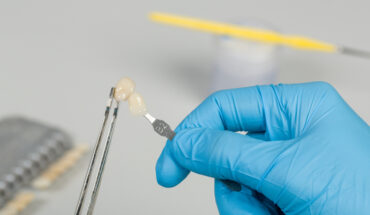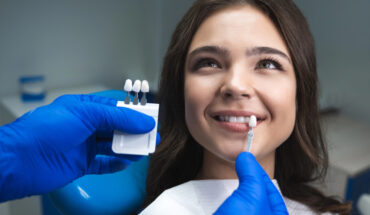
The field of cosmetic dentistry has always been at the forefront of technological advancement, continually evolving to meet the esthetic demands of patients. In 2024, this evolution shows no signs of slowing down. With the integration of cutting-edge technologies and advanced techniques, cosmetic dentistry is poised to revolutionize the way we think about dental aesthetics. In this article, we will explore some of the most exciting innovations in cosmetic dentistry, focusing on how these advancements are enhancing patient outcomes and transforming the industry.
Digital Smile Design (DSD)
Digital Smile Design (DSD) is one of the most significant advancements in cosmetic dentistry. This innovative technology allows dentists to create a precise, digital model of a patient’s smile, which can be manipulated to show potential outcomes of various treatments. By using high-quality images and videos, dentists can design a smile that is customized to the patient’s facial features and preferences. DSD not only improves the accuracy of cosmetic procedures but also enhances patient communication. Patients can visualize the proposed changes to their smiles before any treatment begins, ensuring they are fully satisfied with the plan. This esthetic-driven approach reduces the risk of misunderstandings and increases patient satisfaction.
3D Printing in Dentistry
3D printing has been making waves in various industries, and cosmetic dentistry is no exception. In 2024, 3D printing technology has become more accessible and efficient, allowing for the creation of highly precise dental restorations. From crowns and bridges to dentures and orthodontic appliances, 3D printing offers a quick and accurate solution for fabricating dental prosthetics.
The use of 3D printing in cosmetic dentistry has several benefits. It reduces the time required for producing dental restorations, enhances the fit and comfort of the prosthetics, and lowers the overall cost of treatment. Additionally, 3D printing allows for greater customization, ensuring that each restoration is tailored to the patient’s unique dental anatomy and aesthetic preferences.
Laser Dentistry
Laser technology has been a game-changer in many medical fields, and its impact on cosmetic dentistry is profound. Lasers are now used for a variety of cosmetic procedures, including teeth whitening, gum reshaping, and the removal of dental decay. One of the most notable advantages of laser dentistry is its minimally invasive nature. Procedures performed with lasers often result in less pain, reduced bleeding, and faster healing times compared to traditional methods.
Teeth whitening with laser technology, for instance, can achieve dramatic results in a single session, making it a popular choice for patients seeking a quick aesthetic improvement. Similarly, laser gum contouring allows for precise reshaping of the gum line, enhancing the overall appearance of the smile.
AI-Powered Diagnostic Tools
Artificial Intelligence (AI) is transforming many aspects of healthcare, and cosmetic dentistry is no exception. AI-powered diagnostic tools are becoming increasingly sophisticated, enabling dentists to detect and diagnose dental issues with unprecedented accuracy. These tools can analyze digital images, X-rays, and other diagnostic data to identify potential problems and suggest appropriate treatments.
In cosmetic dentistry, AI can be used to plan and simulate esthetic procedures. For example, AI algorithms can predict the outcomes of orthodontic treatments, helping dentists design the most effective and esthetically pleasing treatment plans. This technology not only improves the precision of cosmetic procedures but also enhances patient confidence by providing a clear preview of the expected results.
Digital Marketing in Cosmetic Dentistry
As cosmetic dentistry becomes more advanced, the way practices attract and engage patients is also evolving. Digital marketing plays a crucial role in this transformation. With the rise of social media, online reviews, and digital advertising, cosmetic dentists are leveraging these platforms to reach a broader audience and showcase their expertise.
Effective digital marketing strategies for cosmetic dentistry practices include maintaining a strong online presence, utilizing search engine optimization (SEO) to improve visibility, and engaging with potential patients through social media channels. High-quality before-and-after photos, patient testimonials, and educational content about cosmetic procedures can help build trust and attract new patients.
In addition, digital marketing tools such as targeted ads and email campaigns allow practices to connect with patients on a more personal level. By offering personalized content and promotions, cosmetic dentists can foster long-term relationships with their patients and encourage repeat visits.
Biocompatible Materials
The development of new, biocompatible materials is another exciting innovation in cosmetic dentistry. These materials are designed to mimic the natural properties of teeth and gums, providing a more natural and esthetically pleasing result. Advances in material science have led to the creation of dental composites and ceramics that are not only durable but also highly esthetic.
For example, zirconia-based ceramics are increasingly used for dental crowns and bridges due to their strength and natural appearance. These materials are designed to blend seamlessly with the patient’s natural teeth, ensuring a harmonious and attractive smile. Moreover, biocompatible materials reduce the risk of allergic reactions and other complications, making them a safer choice for patients.
The innovations in cosmetic dentistry in 2024 are transforming the way dentists approach esthetic treatments and enhancing patient experiences. From Digital Smile Design and 3D printing to laser dentistry and AI-powered diagnostic tools, these advancements are setting new standards in dental care. Additionally, the integration of digital marketing strategies is helping practices reach and engage with patients more effectively. As technology continues to advance, we can expect even more groundbreaking developments in the field of cosmetic dentistry, ensuring that patients achieve the beautiful, healthy smiles they desire.




